Immerse yourself in the biblical symbolism of the number 8, revealing layers of new beginnings and eternal promise that beckon deeper exploration.

Number 8 in the Bible
Imagine wading through the rich tapestry of biblical narratives, where the number 8 emerges like a beacon, symbolizing new beginnings and eternal promise. As you explore this mystical number, you'll uncover its presence in the very fabric of creation, the salvation aboard Noah's Ark, the sacred covenant of circumcision, and the profound symbolism of resurrection and renewal.
Each instance invites you to ponder the depths of its significance, from the Feast of Tabernacles to the transformative visions of Zechariah and beyond. Join this journey to unravel how the number 8 weaves a thread of hope and renewal throughout the biblical landscape, beckoning a closer look at its divine orchestration.
Key Takeaways
- The number 8 symbolizes new beginnings and spiritual rebirth in biblical contexts.
- Circumcision on the eighth day signifies a covenant and commitment to God.
- Kingship transitions and divine renewals often reflect the significance of the number 8.
- Zechariah's visions and biblical feasts underscore the theme of divine orchestration and renewal.
The Creation Week
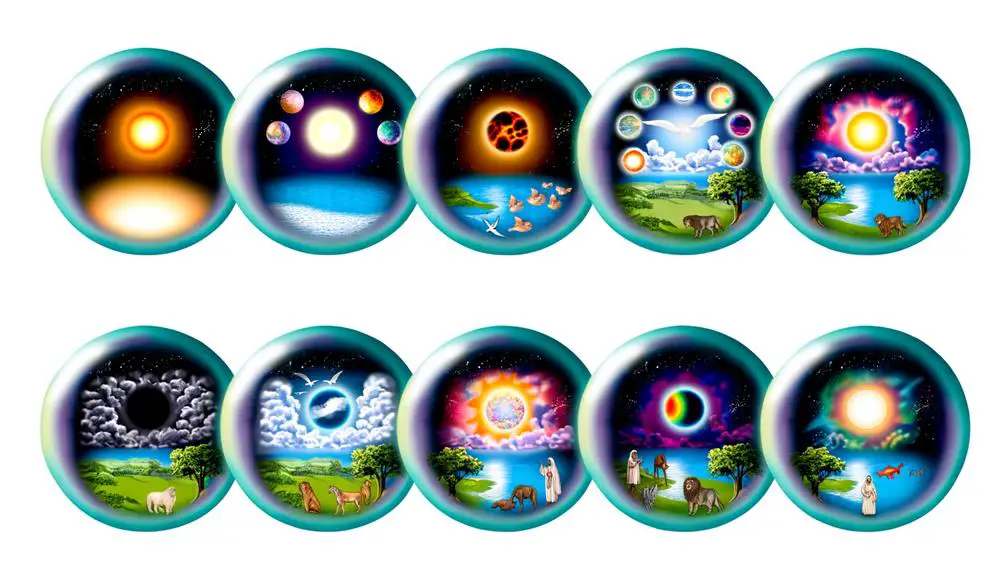
The Creation Week, a foundational narrative in Biblical lore, meticulously outlines the divine orchestration of the universe's genesis over a period of seven days, inviting a deeper exploration of its theological and cosmological implications. This narrative isn't just a story; it's a rich tapestry that weaves together elements of time, space, and the divine, offering insights into the nature of God and the universe. It's crucial to delve into the specifics, particularly the significance of 'evening stars, morning light,' which aren't merely celestial phenomena but symbolic representations within this cosmic blueprint.
The mention of 'evening stars, morning light' encapsulates the transition from chaos to order, darkness to enlightenment, and unknowing to revelation. This duality isn't accidental but deeply ingrained in the fabric of creation, representing the cyclical nature of life, death, and rebirth. It's a reminder that in the beginning, God didn't just create light but differentiated it from darkness, establishing a fundamental order and rhythm to the universe.
Analyzing these elements, you're not just observing the physical manifestations of divine will but understanding the deeper, underlying messages. The 'evening stars' signify the completion of a phase, while the 'morning light' heralds a new beginning, embodying hope and renewal. This interplay between evening and morning, stars and light, encapsulates the essence of creation, reflecting a universe that's meticulously ordered and profoundly meaningful.
Thus, the Creation Week isn't merely a chronological account of the universe's origins but a profound reflection on the nature of divine intervention, order, and purpose. Through the lens of 'evening stars, morning light,' you're invited to ponder the broader questions of existence and the divine plan, offering a nuanced understanding of this seminal Biblical narrative.
Noah's Ark Passengers

Exploring further into the Biblical narratives, you'll find that Noah's Ark and its passengers offer another layer of insight into the divine orchestration of life, highlighting themes of salvation, obedience, and renewal amidst catastrophic destruction. The Ark's construction, as detailed in the scriptures, wasn't merely an act of survival but a divine commandment, symbolizing God's covenant with Noah, his family, and by extension, all living creatures. The Ark itself, a marvel of ancient engineering, was designed to endure the deluge, preserving the seeds of future generations.
The directive to bring animal pairs into the Ark is particularly significant. This command underscores a divine intention for life to flourish post-calamity, ensuring the continuity of species. Each pair of animals, from the mundane to the magnificent, was selected with purpose, embodying the principle of balance and harmony within creation. This meticulous selection process wasn't arbitrary but reflected a divine blueprint for ecological and biological diversity.
Moreover, the inclusion of animal pairs on the Ark serves as a profound symbol of renewal. Just as the world was cleansed of its corruption through the flood, the preservation of these pairs signified a fresh start, a rebirth of the natural order underpinned by divine grace and foresight.
Analyzing the passengers of Noah's Ark, you're drawn into a deeper appreciation of the narrative's complexity. It's a story that transcends its ancient origins, offering timeless lessons on responsibility, stewardship, and the possibility of redemption and renewal in the face of overwhelming adversity.
Circumcision Covenant
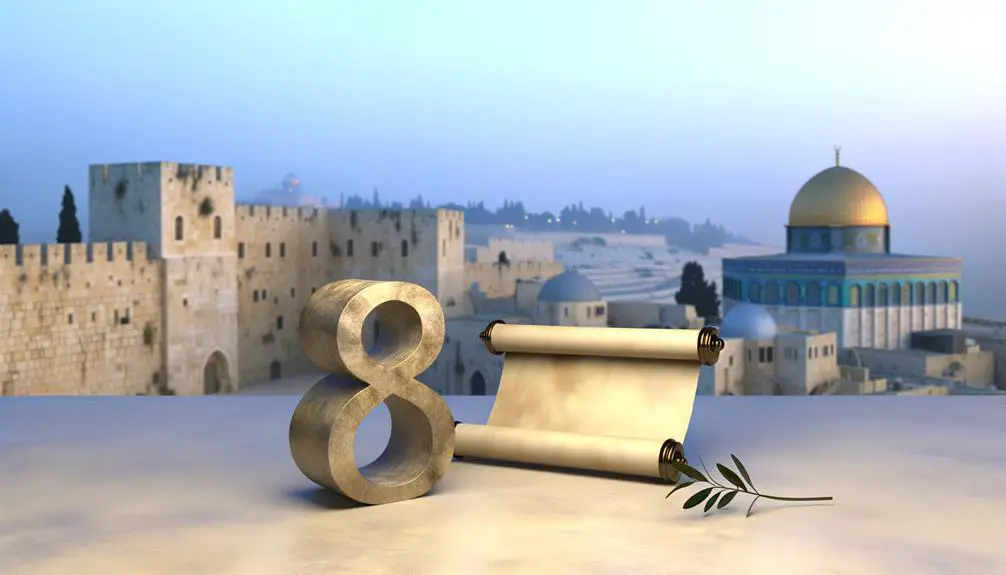
You'll find the circumcision covenant carries profound significance within Judaism, marking not only a physical transformation but also embodying a deep spiritual meaning.
This rite, established historically, has undergone various changes, reflecting shifts in interpretation and practice over time.
Analyzing its roots and evolution offers insights into both the covenant's enduring relevance and its adaptation to contemporary Jewish life.
Significance in Judaism
In Judaism, the number 8 holds profound significance, particularly through its association with the covenant of circumcision, which mandates the performance of this rite on a male infant's eighth day of life. This ritual, known as Brit Milah, embodies the physical manifestation of the Jewish people's covenant with God. It's a tradition steeped in thousands of years of history, symbolizing a commitment that transcends mere physicality, hinting at a deeper, spiritual bond.
Additionally, the number 8 finds its importance in the celebration of Shemini Atzeret, a Jewish holiday that occurs on the eighth day following Sukkot. This day stands apart, emphasizing renewal and spiritual reflection, reinforcing the number's significance in marking moments of transition and covenantal renewal within the Jewish faith.
Physical and Spiritual Meaning
The covenant of circumcision, performed on a male infant's eighth day, embodies a complex interplay between physical act and spiritual commitment within the Jewish faith. This rite not only marks a physical initiation but also signifies a deeper, spiritual bond with the divine, encapsulating the child within the historical and covenantal lineage of the Jewish people. The number eight, thus, serves as a numerical representation of this transformative moment, bridging the earthly with the heavenly.
Aspect |
Significance |
|---|---|
Numerical Representation |
Eight embodies new beginnings and covenantal promises |
Physical Act |
A rite of passage and identity within the community |
Spiritual Commitment |
Entry into a covenantal relationship with God |
Modern Interpretations |
Symbolizes a blend of tradition and contemporary faith journeys |
Through this lens, the circumcision covenant transcends its physical execution, reflecting a multi-layered identity shaped by both ancestral heritage and modern interpretations.
Historical Practices and Changes
Over centuries, practices surrounding the circumcision covenant have undergone significant transformations, reflecting shifts in theological interpretations, social norms, and medical knowledge. The numerical symbolism and cultural interpretations of circumcision have played crucial roles in its evolution.
- Initial Religious Command: Circumcision is introduced as a divine covenant, emphasizing its spiritual significance and numerical symbolism.
- Cultural Adaptation: Various cultures have adapted the practice, infusing it with local meanings and rituals.
- Medicalization: In modern times, circumcision has been medicalized, focusing on health benefits rather than solely on religious or cultural significance.
- Contemporary Debates: Today, discussions often revolve around ethical considerations, personal choice, and the balance between tradition and modern medical advice.
These shifts highlight the complex interplay between faith, health, and society in understanding circumcision.
Resurrection and the Eighth Day
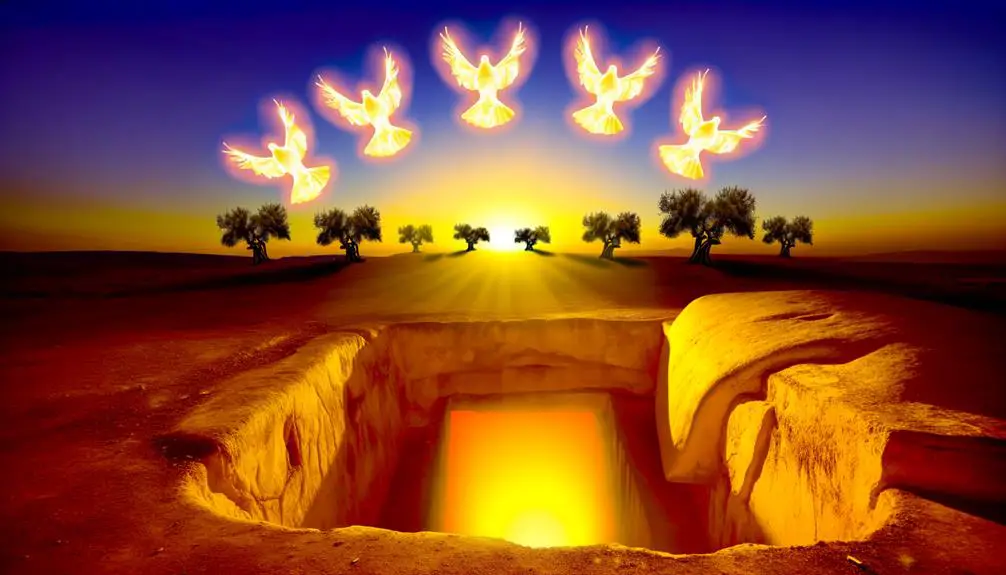
You'll find that within biblical scripture, the number 8 holds profound significance, particularly when examining its relation to resurrection and the notion of the eighth day.
This concept symbolizes new beginnings and is intricately connected to events of circumcision and redemption, offering a multifaceted view of renewal and spiritual rebirth.
Through an analytical lens, this connection underscores a deeper theological narrative of restoration and divine grace, pivotal to understanding the biblical text's layers.
New Beginnings Symbolism
In biblical symbolism, the number 8 signifies a new beginning, epitomized by the resurrection and the concept of the eighth day, marking a departure from old cycles into a realm of renewed creation and hope. This departure ushers in fresh starts and renewed hope, as illustrated by:
- Resurrection of Jesus: Symbolizing ultimate victory over death and the promise of eternal life.
- Creation Week: The eighth day begins a new order, distinct and free from the constraints of the initial creation.
- Biblical Feasts: Some feasts extend into an eighth day, representing not just a continuation but a new phase in spiritual significance.
- Reign of Kings: Their coronations often signified the onset of peace and prosperity, metaphorically beginning a 'new day' in the history of their realms.
Circumcision and Redemption
Building on the theme of new beginnings, let's explore how circumcision on the eighth day embodies the concept of redemption and mirrors the resurrection, marking a profound spiritual rebirth and renewal.
This practice, deeply rooted in ancient traditions, signifies a covenant with the divine, a physical manifestation of spiritual purification and commitment.
From medical perspectives, the timing of circumcision is often examined for its health benefits, contributing to contemporary debates around religious rites and modern health standards.
These discussions enrich our understanding of ancient customs, highlighting the intersection between faith, tradition, and science.
The act of circumcision on the eighth day thus not only symbolizes a personal and communal rebirth but also engages with broader dialogues about the balance between religious observance and medical ethics.
Feast of Tabernacles
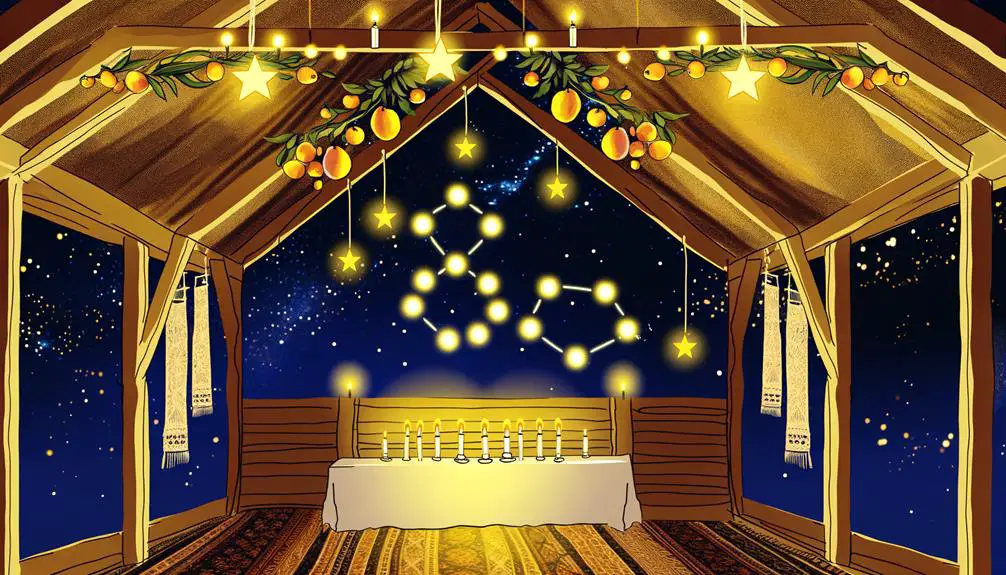
The Feast of Tabernacles, a cornerstone of Jewish liturgical and cultural life, symbolizes the wandering of the Israelites in the desert and their reliance on divine providence. Known also as Sukkot, this festival weaves together traditions and the joy of the harvest celebration, encapsulating themes of gratitude, faith, and communal unity.
- Historical Roots: Sukkot commemorates the forty-year period during which the Israelites were wandering in the desert, living in temporary shelters. This historical reflection encourages a recognition of the transient nature of human life and the enduring presence of the divine.
- Agricultural Significance: As a harvest celebration, Sukkot marks the end of the agricultural year. It's a time to give thanks for the bounty of the land, acknowledging the intricate balance between human labor and divine blessing in the production of food.
- Ritual Practices: Central to Sukkot traditions is the building of the sukkah, a temporary hut with a roof of branches, symbolizing the fragile dwellings of the Israelites. This act of construction serves as a tangible reminder of the impermanence of material possessions and the importance of spiritual values.
- Community and Joy: Sukkot is characterized by a spirit of hospitality and joy. Sharing meals in the sukkah with family, friends, and even strangers reflects the communal aspect of the celebration and the value of generosity.
Analyzing Sukkot reveals its deep embeddedness in Jewish culture as a synthesis of historical memory, agricultural cycles, ritual observance, and communal ethics. This festival encapsulates a nuanced understanding of human vulnerability and divine protection, inviting reflection on the broader themes of faith and reliance on higher powers.
Kings and Renewal
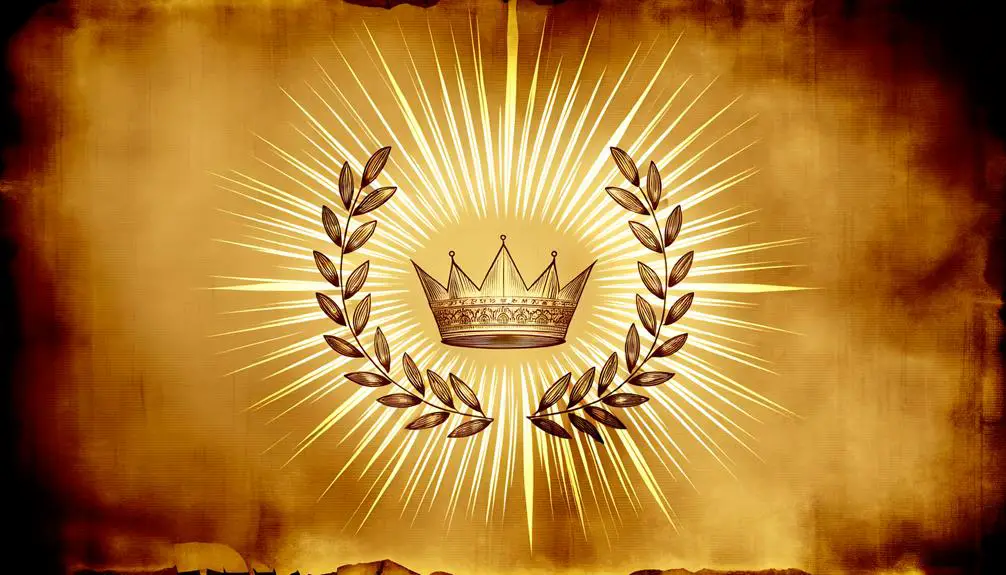
Reflecting on the biblical narrative, it's evident that kings played pivotal roles in the process of renewal, both spiritually and politically, within the ancient Israelite society. Royal ascensions often marked significant leadership transitions, heralding eras of reform and rejuvenation. These moments weren't merely ceremonial but were imbued with deep theological significance, symbolizing divine approval and a covenantal relationship between God and His chosen people.
The narrative arcs of kings such as David and Solomon illustrate how royal leadership was central to Israel's identity and destiny. Upon their ascensions, these kings weren't only tasked with political governance but were also entrusted with spiritual stewardship over the nation. Their reigns were characterized by efforts to centralize worship, enforce God's laws, and lead the people in adherence to their covenant with Yahweh. These actions were pivotal in renewing the nation's spiritual fervor and re-establishing its covenantal relationship with God.
Moreover, leadership transitions often served as catalysts for renewal. For instance, the transition from Saul to David marked a shift from a period of spiritual malaise to one of national consolidation and spiritual revival. Similarly, the ascension of Solomon brought about an era of unprecedented peace and prosperity, coupled with the construction of the Temple, symbolizing a renewed focus on worship and divine presence.
In analyzing these biblical accounts, it's clear that kingship in Israel was more than a political institution; it was a divine instrument for renewal. Through royal ascensions and leadership transitions, God worked to restore, guide, and renew His people, underscoring the profound interconnection between spiritual leadership and national destiny.
The Eight Visions of Zechariah
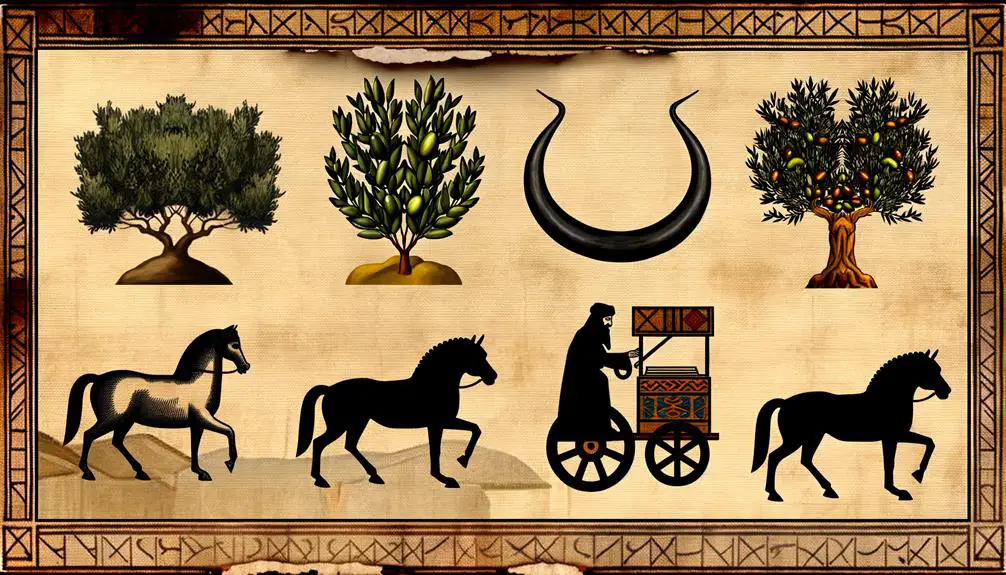
Delving into the prophetic landscape of the Old Testament, one discovers that the Eight Visions of Zechariah stand as a formidable testament to divine communication and the promise of renewal for the people of Israel. These visions, fraught with prophetic symbols and angelic interactions, offer a complex tableau of hope, judgment, and restoration. They're not merely esoteric dreams but are deeply symbolic narratives that engage with the existential and spiritual crises of Zechariah's time—and beyond.
To paint a picture for you:
- The Horseman Among the Myrtle Trees: Symbolizing God's patrol of the earth, it reassures the return of divine oversight and protection.
- The Four Horns and the Four Craftsmen: Representing the nations that oppressed Israel and the divine forces that would dismantle those powers, it underscores a theme of divine justice and liberation.
- The Surveyor: Illustrating the promise of Jerusalem's expansion without walls, due to God's protective presence, it speaks to a future of security and growth.
- Joshua and the High Priest: Showcasing the removal of sin from the land and the reinstatement of the high priest, it symbolizes spiritual renewal and the restoration of religious order.
Through these visions, Zechariah conveys not just the immediate future of Israel but also a larger, eschatological vision. Each vision, rich in angelic interactions, serves as a divine message, carrying both warnings and promises. They collectively underscore a pivotal theme in biblical prophecy: the interplay between divine judgment and mercy, between human failure and divine promise.
Symbolism in Revelations
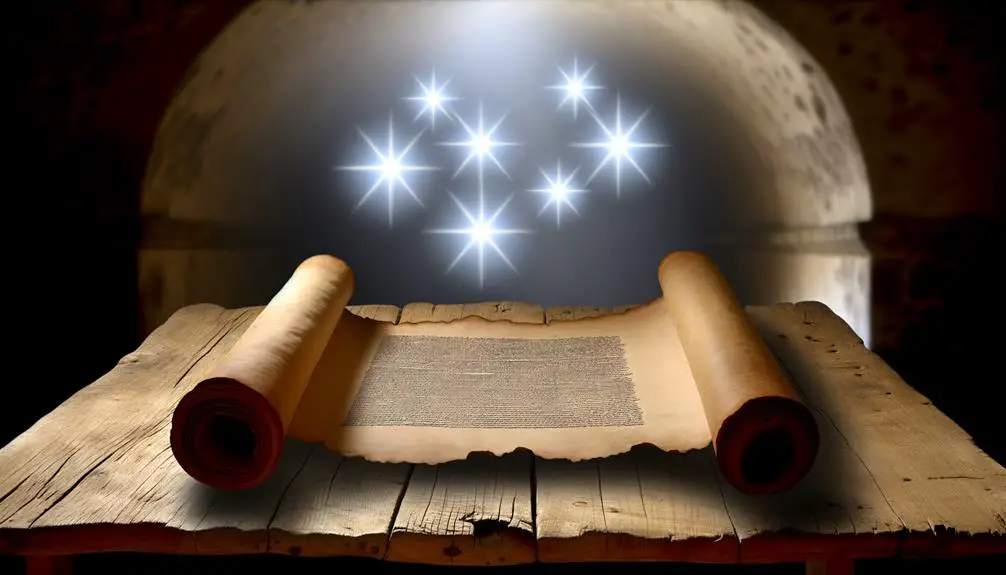
In analyzing the Book of Revelation, one immediately encounters a rich tapestry of symbolism, each element intricately woven with theological and eschatological significance, inviting readers to delve deeper into its prophetic mysteries. Central to its narrative are the Seven Seals and the enigmatic Beast, symbols that have engaged theologians and scholars in a deep quest for understanding.
The Seven Seals represent stages of divine revelation and judgment, unfolding with a precision that mirrors the apocalyptic nature of the text itself. Each seal, when broken, reveals a layer of God's plan for humanity's ultimate redemption and judgment. This sequential unveiling serves not only as a forewarning but also as a testament to the inevitability of divine justice.
Turning to the Beast's identity, this figure stands as one of the most debated symbols within Revelation. Representing the culmination of human rebellion against God, the Beast embodies political and religious corruption. Its number, 666, has sparked countless interpretations, yet the consensus leans towards it being a code for the ultimate human empire that opposes divine authority. This figure, with its blasphemous power, tempts humanity away from faith, making its eventual downfall a pivotal moment in the narrative.
Through these symbols, Revelation paints a vivid picture of the cosmic struggle between good and evil, highlighting the transient nature of earthly power and the eternal significance of spiritual allegiance. The text's rich symbolism encourages you to reflect on your own beliefs and the broader cosmic battle it depicts, making it a timeless piece of theological inquiry.
Frequently Asked Questions
How Does the Number 8 Relate to New Beginnings or Rebirths in Personal or Spiritual Contexts Outside the Stories of Noah and the Resurrection?
You might wonder how the number 8 symbolizes new beginnings or rebirths outside certain biblical narratives.
Intriguingly, it's seen in practices like Eight Prayers, which aim to facilitate spiritual renewal.
Additionally, circumcision, performed on the eighth day, carries deep symbolism of entering a covenant, thus marking a fresh spiritual start.
These instances reflect how the essence of rebirth and new beginnings transcends specific stories, embedding deeply in broader spiritual traditions.
Are There Any Significant Uses of the Number 8 in the Bible That Relate to the Structure or Organization of Texts, Such as in Psalms or Proverbs, That Are Not Directly Tied to the Narratives Mentioned?
You might find it intriguing that in the realm of textual patterns within the Bible, the number 8 doesn't directly influence Psalm divisions or the structuring of Proverbs in a notable manner.
While 8 symbolizes new beginnings in certain narratives, its significance doesn't extend to the organization of biblical texts.
This suggests a separation between symbolic numbers in storytelling and the practical arrangement of scripture, underscoring a complex layer of biblical composition.
How Has the Symbolism of the Number 8 Been Interpreted or Utilized in Christian Traditions and Rituals Not Directly Linked to Biblical Stories, Like Baptism or Church Architecture?
In Christian traditions, you'll find the number 8 woven into practices and structures, reflecting deep symbolism. For instance, baptismal fonts are often octagonal, symbolizing rebirth and new beginnings, mirroring the eighth day as a new creation.
Similarly, octagonal churches point to regeneration and eternal life, capturing the essence of Christian faith and the promise of resurrection. These designs aren't arbitrary; they're steeped in theological significance, underscoring the faith's foundational beliefs.
What Is the Significance of the Number 8 in the Context of Biblical Numerology, Especially in Comparison to Other Numbers Considered Important in the Bible?
In biblical numerology, you'll find the number 8 stands out, especially when you compare it to other significant numbers. It symbolizes new beginnings and resurrection, a theme you can't ignore.
For instance, the Eight Beatitudes present in Jesus' Sermon on the Mount reveal deep insights into Christian ethics. These numerical patterns aren't just random; they're woven into the fabric of scripture, offering a unique lens through which to analyze and interpret biblical teachings.
Can the Influence of the Number 8 Be Seen in the Naming or Ordering of Biblical Characters and Places Outside the Specific Contexts of Kings, Passengers of Noah's Ark, and Circumcision Covenant?
Yes, you'll find the influence of the number 8 beyond the realms of kings, Noah's ark passengers, and the circumcision covenant.
It subtly weaves through genealogical patterns and even aligns with certain Feast days, showcasing its significance across various facets of biblical narrative.
This numeric presence isn't random; it reflects a deeper, structured symbolism within the text, offering insights into the cultural and religious fabric of the biblical world.
Conclusion
In essence, the number 8 in the Bible serves as a powerful symbol of new beginnings, echoing the creation week and symbolizing renewal and resurrection. From Noah's Ark to the Feast of Tabernacles, it's clear that this digit transcends mere numerical value, embodying profound spiritual significance.
Interestingly, akin to hitting the reset button in today's digital age, the biblical instances of 8 invite reflection on regeneration and divine promises. Through meticulous analysis, it's evident that 8's symbolism is deeply woven into the fabric of biblical narratives, offering layers of meaning for those who seek understanding.

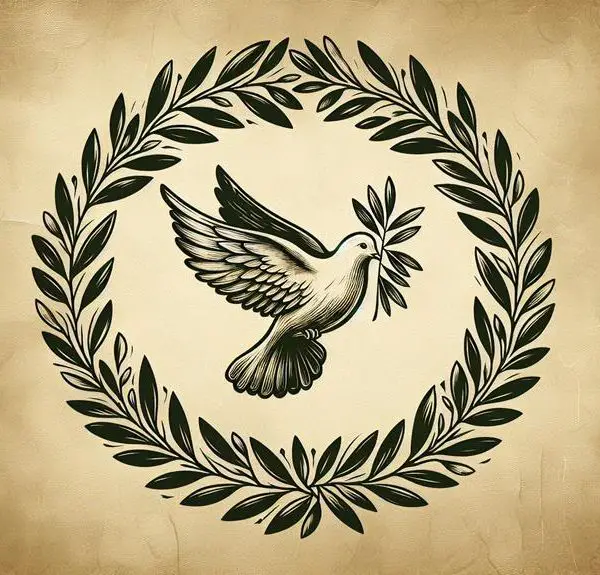
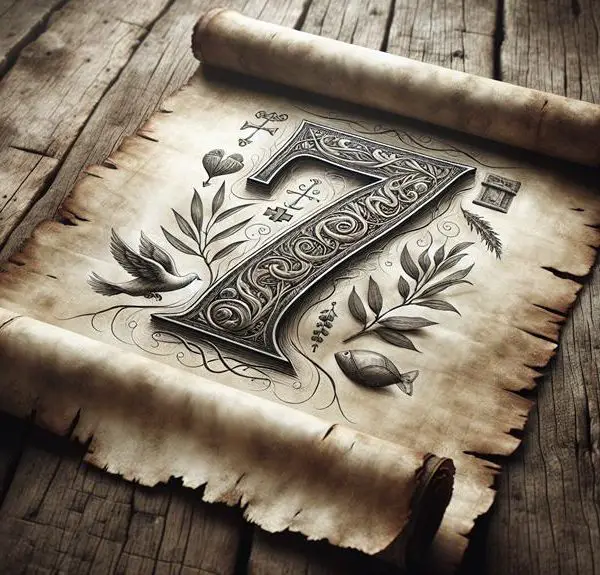
Sign up